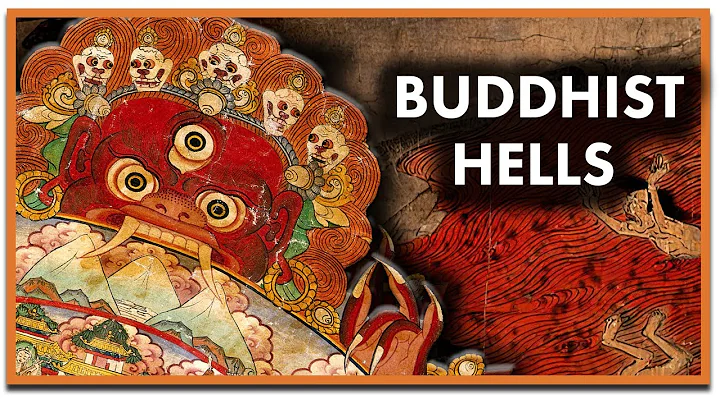The Eight Paths of Buddhism
One of the most famous spiritual paths actually has several aspects. The noble eightfold path of Buddhism spans the four noble truths of the Buddha - which, at first glance, is actually a bit depressing.
We will give you the list and you can see for yourself
1. Life means pain.
2. The root of pain is attachment.
3. Stopping suffering is achievable.
4. The way to stop suffering is the road of eighty-fold.
Needless to say, the landscape of these four noble truths deserves a lengthy explanation, but we can only give you a glimpse of it here. The origin of pain is said to be attachment to ephemeral things, and everything in this world is considered ephemeral. This includes not only material things, but also thoughts and all objects of our perception. The essence of suffering is contained in two words: craving and obsession.
With a little thought, anyone can apply this idea to their own life. Themes of longing and obsession, in one way or another, appear in most tarot readings.
The Eight Paths are Buddhism’s answer to the dilemma of the Four Noble Truths. The eight parts of the path are as follows:
1. Right View 2. Right Intention 3. Right Speech 4. Right Action 5. Right Livelihood 6. Right Effort 7. Mindfulness
8. Right Concentration
The Eightfold Nobility The Road is a practical guide to personal freedom from attachments and illusions. Together with the Four Noble Truths, it is the essence of Buddhism. Here is a brief explanation of eight aspects of this path that you might be able to apply to your own life or the life of your doubter.
The first aspect is the correct perspective, which means seeing and understanding the true face of things and realizing the four noble truths. It means grasping the impermanence and imperfection of the world of objects and concepts. What you have won’t last that long, and maybe what you want isn’t that great.
The second aspect is right intention, a commitment to moral and psychological self-improvement.
Buddha mentioned three correct intentions:
a. The intention to give up desires,
b. The intention of good intentions,
c. The intention to do no harm.
The third way is right speech, the Buddha explained it as follows:
a. To avoid lies,
b. Avoid slander,
c. To avoid saying offensive and hurtful things,
d. Avoid small talk.
The fourth aspect is called correct action and it involves the body. Unhealthy physical behavior is said to lead to an unhealthy mental state, and unhealthy physical behavior leads to a sound mental state. Correct action means:
a. Avoid taking life (including your own life), do not kill anything;
b. Do not ask for something that is not freely given, do not steal or extort;
c. Stay away from food, drink, sex , self-indulgence in drugs, etc.
The fifth aspect is right livelihood, which means that a person should make a living in a just, legal and peaceful way.
The Buddha mentioned four specific activities that harm other living creatures and should be avoided:
a. Handling weapons,
b. Working with living creatures, such as the slave trade and prostitution,
c. Working with meat production and slaughter,
d. Selling narcotics and Poisons, such as alcohol and drugs.
The sixth aspect is right effort, which is an act of will without which nothing positive can be achieved. Correct efforts are described as the four behaviors of mental training :
a. Prevent the formation of bad habits,
b. Give up the bad habits you already have,
c. Develop good habits,
d. Maintain and improve the good habits you already have. habits and qualities.
Correct Mindful is the seventh aspect and one that Wald is particularly fond of. It is the ability to see things without being distorted. What we think we know begins with an impression caused by sensory perception. We accept this impression and immediately conceptualize and interpret it. The mind then adds conceptual constructs into structures and weaves these constructs into complex interpretive schemes. All of this happens much faster than conscious thought, with the result that what we actually see is obscured by an impenetrable web of interpretation. Right mindfulness is a clear perception that dissolves this web of interpretation and allows us to see what is behind it. This process is crucial, but difficult to learn.
The last aspect of the Eightfold Path is right attention, which is just one point to which the mind is directed. Through training, the brain learns to focus, intensify, and ultimately stay focused on a selected behavior or goal to achieve a clear and productive vision. It's easy to say but hard to do. Obviously, this is only the most detailed description of a set of practices that may take a devout Buddhist a lifetime of study. Following the Eightfold Path creates great mental and spiritual refinement, even if it doesn't travel to the end. From the beginning to the end, it leads to nirvana. We spend quite a bit of time talking about this particular path because it details what the West calls the Path of Ascent, which is the essence of the same practical goal. It clearly depicts the world as a place of pain from which we would all be well advised to escape and achieve this through a step-by-step plan of spiritual discipline and ascension.


















![[English] Who Am I - Lecture 1 - Ven. Guan Cheng - DayDayNews](https://i.ytimg.com/vi/KU0fUs2It5o/hq720.jpg?sqp=-oaymwEcCNAFEJQDSFXyq4qpAw4IARUAAIhCGAFwAcABBg==&rs=AOn4CLDFpQUN_QwRfC7bmP4sUadq-RcYdg)
![A Moving Masterpiece 清明上河图 [English narration] - DayDayNews](https://i.ytimg.com/vi/kxff-4GktOI/hqdefault.jpg?sqp=-oaymwEcCOADEI4CSFXyq4qpAw4IARUAAIhCGAFwAcABBg==&rs=AOn4CLBtHGLeUpJNCYDJYnZTuISQ1N5Vag)


